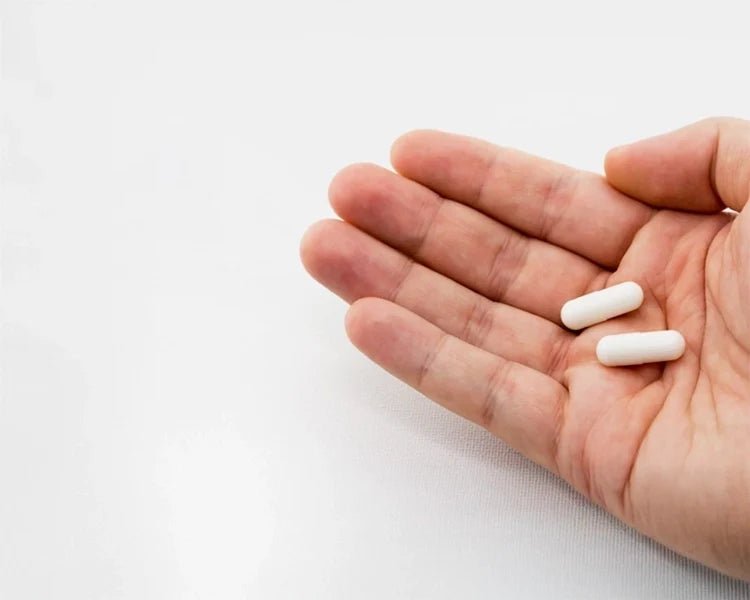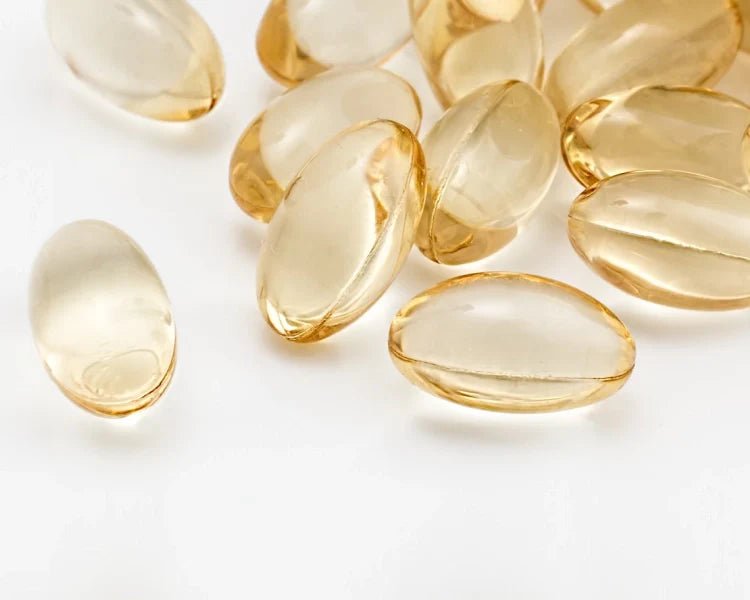Education
The role of physiotherapy in reducing inflammation in patients
Physiotherapy, as an integral part of medical rehabilitation, plays a key role in managing inflammation in patients. Inflammation is often associated with a number of diseases, including rheumatoid arthritis and even cardiovascular disease. Physical therapy can help relieve symptoms and speed up the healing process. Mechanisms of action Physiotherapy uses various methods and techniques that help reduce inflammation, such as manual therapy, therapeutic exercises, heat and cold therapy, ultrasound and electrotherapy. These techniques are intended to reduce pain, improve mobility, increase muscle strength, and improve the overall performance of the body. Manual therapy Manual therapy, which includes massage and joint mobilization, helps reduce inflammation by improving circulation and reducing muscle tension. Improving circulation helps deliver nutrients to the inflamed area and speeds up the removal of waste products, which speeds up the healing process. Therapeutic exercises Therapeutic exercises are a key element of physiotherapy. They help maintain and improve range of motion, increase muscle strength and improve the overall performance of the body. Regular exercise can also help reduce inflammation by increasing the production of the body's natural pain-relieving and anti-inflammatory substances, such as endorphins. Heat and cold therapy Heat and cold therapy are often used to reduce inflammation. Heat helps increase blood circulation, which speeds up the healing process, while cold helps reduce pain and swelling. Electrotherapy and ultrasound Electrotherapy and ultrasound are other popular techniques used in physical therapy. Electrotherapy uses electrical current to stimulate nerves and muscles, which helps reduce pain and swelling. Ultrasound, by producing a sound wave, can help reduce inflammation by improving blood circulation and stimulating healing processes. Physiotherapy is therefore a key element in the treatment and management of inflammation. By using appropriate techniques, physiotherapy helps reduce pain and swelling, increases range of motion and improves patients' quality of life. However, it is important to remember that physical therapy is part of a comprehensive treatment plan and should be used in conjunction with other forms of therapy such as anti-inflammatories and lifestyle changes. Patryk Pyrz
Learn moreThe role of physical activity in cancer prevention
Exercise can increase motivation to change lifestyle, improve aerobic capacity, improve physical fitness, control fatigue and improve quality of life [1], and this is just a part of their beneficial effects on the human body at all ages. It is estimated that almost half of cancer cases can be prevented by changing lifestyle, including physical activity [2], which is one of the four pillars of health. In a report by The World Cancer Research Fund (WCRF) published in 2020, the organization indicates that it plays a significant role in cancer prevention [3] . The main benefits of physical activity include regulating body weight, improving the efficiency of the circulatory and respiratory systems, as well as strengthening muscles and bones. Blood flow and tissue oxygenation are also increased, which translates into greater energy and vitality. Additionally, exercise has a real impact on mental health because regular exercise can reduce symptoms of depression, anxiety and stress by releasing hormones that can improve mood and feelings of overall well-being. Physical activity also improves cognitive functions, i.e. memory, concentration and the ability to focus, and significantly increases the quality of sleep by regulating the circadian rhythm. Regular exercise can help you fall asleep faster and enable deeper sleep, and it also lowers blood pressure, reducing the risk of heart disease. The multi-year European Prospective Investigation into Cancer and Nutrition (EPIC) study of over 500,000 people found that regular physical activity was associated with a lower risk of many types of cancer, such as colorectal cancer, breast cancer, pancreas and endometrial cancer [4]. A meta-analysis based on 170 studies confirmed that regular physical activity is associated with a reduced risk of colorectal cancer. It was observed that people engaging in regular physical exercise had a 24% lower risk of developing this type of cancer compared to people leading a sedentary lifestyle [5]. A study published in the British Journal of Cancer and conducted by the European Prospective Investigation into Cancer and Nutrition - EPIC found that regular physical activity can reduce the risk of breast cancer in postmenopausal women. Women who performed at least 7 hours of moderate physical activity per week had a 13% lower risk of developing breast cancer compared to those who were physically inactive [6]. Systematic physical activity, which can be freely chosen from a wide range of possibilities, from walks in nature, through team games, to individual training in the gym, provides great support in cancer prevention. It is a permanent element of a healthy lifestyle, which is modified depending on possibilities, needs and preferences. In addition to the obvious physical benefits it brings, it has a real impact on improving mood and well-being. Its beneficial effect on the body is multidimensional, so it is worth including it permanently in your weekly plan. Zuzanna Pilipiuk Qiaoyun Wang, Wenli Zhou, (2020) Roles and molecular mechanisms of physical exercise in cancer prevention and treatment, J Sport Health Sci. 2021 Mar;10(2):201-210. doi: 10.1016/j.jshs.2020.07.008. Epub 2020 Jul 30. Christine M Friedenreich, Charlotte Ryder-Burbidge, Jessica McNeil, (2021). Physical activity, obesity and sedentary behavior in cancer etiology: epidemiologic evidence and biological mechanisms, Mol Oncol. 2021 Mar;15(3):790-800. doi: 10.1002/1878-0261.12772. Epub 2020 Aug 18. Steven K Clinton, Edward L Giovannucci, Stephen D Hursting, (2020). The World Cancer Research Fund/American Institute for Cancer Research Third Expert Report on Diet, Nutrition, Physical Activity, and Cancer: Impact and Future Directions, Żuławski, W., Rutkowski, A., & Dziki, A. (2015). Influence of physical activity on the risk of colorectal cancer in the population of the European countries. Contemporary Oncology, 19(1), 7-13. Keum, N., & Giovannucci, E. (2019). Global burden of colorectal cancer: emerging trends, risk factors and prevention strategies. Nature Reviews Gastroenterology & Hepatology, 16(12), 713-732. Steindorf, K., Ritte, R., Eomois, P. P., Lukanova, A., Tjonneland, A., Johnsen, N. F., ... & Schütze, M. (2013). Physical activity and risk of breast cancer overall and by hormone receptor status: the European prospective investigation into cancer and nutrition. International Journal of Cancer, 132(7), 1667-1678.
Learn morePhysiotherapist - help before, during and after therapy
Oncological rehabilitation should be defined as a medical and social process whose aim is to restore or improve the psychophysical condition of a patient with cancer. According to current trends and guidelines, it should be perceived as an integral and complementary part of interdisciplinary oncological treatment. Physiotherapy in oncology should take into account not only the medical aspect of restoring health, but also social issues - returning to professional activity and other social roles. The aim of this article is to emphasize the importance and sensitize doctors and patients about the appropriateness of referring them to psychophysical rehabilitation before and after surgical and oncological operations. The most common problems after oncological therapies A patient's diagnosis of cancer, whether benign or malignant, may lead to profound emotional changes, a sense of lower self-esteem and, as a result, withdrawal from many roles performed before the disease. It may also cause a decrease in physical strength, fitness problems, lymphedema, pain caused by adhesions or scars. Chemotherapy and radiotherapy can also cause damage to muscles, nerves and tissues. This damage can lead to various disorders, e.g. functional deficits related directly or indirectly to the scope of surgery, neuropathies after treatment with radiological and cytostatic drugs, lymph outflow disorders after removal of lymph nodes, digestive disorders, pain in the chest and abdomen, in the pelvic floor, i.e. incontinence of urine, gases, stools, pelvic pain, perineum or sexual dysfunction. Prepare for the procedure It is worth noting that a visit before the procedure and a functional examination are extremely important in the process of potential postoperative treatment. Assessment of respiratory, performance and neuromuscular functions, as well as learning all these components before the procedure, significantly accelerates the regenerative processes and faster return to the optimal pre-treatment condition. Physiotherapy treatments can help patients recover faster after surgery and reduce the risk of complications, especially antithrombotic complications. Physical therapists can also provide education in breathing techniques and pain management strategies. Breathing exercises are effective in reducing anxiety and improving lung function, which may be impaired after surgery, intubation, and opiate medications. What about scars? Physiotherapists are involved in the education and care of post-operative scar management. Techniques for working with scars help reduce tissue restrictions, reduce pain, and regain the range of motion before the procedure. Working with scars has a key impact not only on the proper sliding of organs against each other, but also on the proper blood supply and functioning of the circulatory, lymphatic and nervous systems. Manual therapy includes practical techniques for mobilizing joints and soft tissues, working on fascia and ligaments, deep indirect and direct work on internal organs and peritoneum, visceral therapy, and osteopathic techniques. Oncological rehabilitation must be a very complex activity due to the huge role of the psychological factor. First, we must determine the needs and work goals for a specific person. This may include the following: Rating The first step in developing a physical therapy plan for a patient is to conduct a thorough assessment of his or her physical function. This may include assessing range of motion, strength, balance and endurance. The therapist should also take into account the pain experienced by the patient. Setting goals Based on the assessment, the physiotherapist will work with the patient to establish and set realistic goals for the time being. These goals may include improving mobility, reducing pain, increasing strength, or overall improving quality of life. Exercise recommendations The physiotherapist develops an exercise program tailored to the patient's specific needs, abilities and goals. It may include exercises to improve range of motion, strength, endurance, but also for everyday activities such as washing, dressing, and preparing meals. Relaxation and stress reduction techniques. Education Physiotherapeutic facilities will provide the patient with education in the context of proper body mechanics and posture to prevent injuries and/or secondary damage. How to properly and safely perform activities for which the patient is adapted. Supportive techniques including indirect and direct therapy Supportive techniques include, among others, manual and fascial therapy, which aims to improve the sliding of the fascia and surrounding structures, but also to improve microcirculation. Visceral therapy, working with scars, adhesions and other structural disorders, helps to eliminate pain. Continuation The physiotherapist will monitor the patient's progress and adjust the treatment plan if necessary. It will also provide ongoing support and encouragement to help the patient achieve their goals. REMEMBER! A physiotherapy plan for an oncology patient should be tailored to his or her needs and goals. It is necessary to implement quickly accessible and publicly available oncology physiotherapy plans outside the hospital. One of such programs, to put it simply, is following the 6E principle. The name comes from the first letters of key activities that, when implemented, will help the patient improve. These are: education, energy conservation, exercise, energy restoration, easing stress and eating well. By following these six rules, you can plan the patient's daily functioning in such a way as to help him get out of the vicious circle of fatigue. AUTHOR: Karolina Olszewska Female and male uro-gynecological physiotherapist, acupuncturist, hirudotherapist
Learn more





